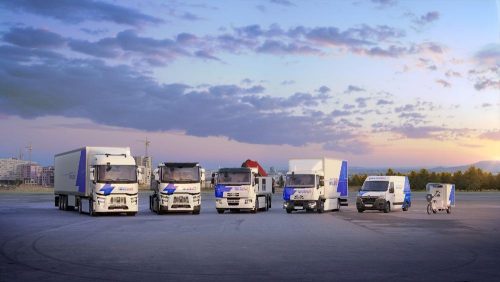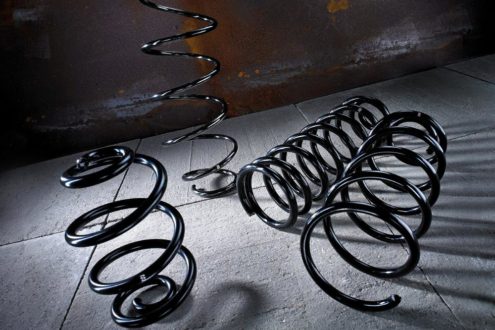Wider range of colors rolled off the world’s assembly lines in 2020
– Expanding color spaces make the overall spectrum broader than 2019
– Diverse shades of blue, red, yellow and violet make gains in some regions
– Despite the shift in colors, white, black, silver, and gray follow a familiar pattern, coating the majority of the vehicles produced
The BASF Color Report 2020 for Automotive OEM Coatings shows the automotive color palette shifting in unconventional ways, unveiling a wider range of chromatic colors rolling off the world’s assembly lines.
Diverse shades like blue and yellow are making gains in some regions, while red and violet are slowly cutting the lead held by the achromatic colors in other parts of the world. The expanding color spaces made the overall spectrum broader than 2019 and added a flash of brilliance.
Despite the shift in colors, the achromatic colors – white, black, silver, and gray – followed a familiar pattern, coating the majority of the vehicles produced. As it has been for several years, white is still the most popular car color around the world. It has a classic, timeless beauty, and a connection to both the environment and high technology.
The data cited throughout this report shows lower total vehicle production than past years. It includes times when automakers had to shut down due to COVID-19. The global pandemic has deeply affected the mobility economy and the world.
EMEA: Greater diversity of chromatic colors and shades
Europe, Middle East and Africa (EMEA) follows the global movement of chromatic colors. In 2020, about 11% of new vehicles in EMEA were coated in blue, making it the most popular chromatic color. Violet is a newcomer to the market, increasing diversity even more. Other chromatic colors are also gaining popularity, especially on smaller SUVs as their market segment grows.
Part of the variety comes from the diversity of shades. OEM automakers used more than 160 distinct shades of blue in 2020 on vehicles in EMEA. Gray was second with 140 shades. Both color spaces were more diverse than white, which only had 70 distinct shades.
In the achromatic spectrum, white is still on top at 28% of the market, followed by gray and black.
“Color variety changes with size. For example, where violet has a unique home in mid-size SUVs, it does not appear in great numbers in smaller or larger SUVs,” said Mark Gutjahr, head of Automotive Color Design, EMEA. “The opposite is true with yellow, which shows up in both the very small and the very large, but not the middle. These are specific and unique color positions that appear and disappear throughout the segments.”
North America: More blue, just as anticipated
North American car buyers have fewer choices for chromatic colors, but that doesn’t mean they’re choosing fewer chromatic cars, trucks, or SUVs. Blue gained more popularity as an automotive color in North America, edging out red, while beige and brown have dropped off the list. That leaves green as the only other chromatic color in significant numbers in the region.
Shades of blue are seen as more elegant, and buyers who may have chosen beige or brown in the past seem to be moving to blues or grays. BASF designers could see this coming. As early as 2016, BASF designers described blue as “a major color direction for the automotive industry that will gain market share in upcoming years.” Automotive designers often look 3-4 model years ahead when developing colors, and the market has played out exactly as predicted.
“There’s a lot to get excited about with the bright colors we’re seeing,” said Paul Czornij, head of design, The Americas. “Just as we predicted three or four years ago, blue is having a moment in the sun, and we’re using some beautiful effects and pigments that advance the possibilities of hue and texture in this important design space.”
Asia Pacific: Black and gray rising, while brighter colors showing up
Asia Pacific is home to the largest volume of automotive production in the world, and a microcosm of global color popularity. While every region is different, Asia Pacific’s preferences mirror global data, and its bright colors mirror the awakening that chromatic colors are experiencing elsewhere.
White is still the most popular color in the region, coating about 48% of the vehicles produced. Black and gray continue to improve, following a three-year trend that eats away at the dominance of white.
While the total numbers aren’t huge, brown, green, and violet are all consistent in color popularity. It will be a long time before they challenge white for the most popular, but for now, they add to the tremendous diversity of color in Asia Pacific.
“People in Asia Pacific really enjoy choosing colors for their vehicles. Colors are very human-oriented, flexible, and free, showing the diversity of the region and its people,” said Chiharu Matsuhara, head of design, Asia Pacific.
South America: Conservative buyers choose more conservative colors
Colors like red and blue, which are so popular in other regions of the globe, are still players in South America, especially among car buyers who are trying to express their individuality with sportier cars. What’s more significant is the market’s love of achromatic colors.
Historically, South American car buyers have chosen more traditional, less flashy colors. Like other regions, white is by far the favorite, covering about 39% of OEM vehicles. The popularity of gray and silver is higher than in other regions, with 18% for each. Black has the smallest preference among the achromatic colors, with 12%. Altogether, the achromatic colors command an 87% share.
Unlike other regions, red stands out as the top chromatic color with 9%. Diverse shades of blue are important worldwide, while in South America, blue is just 2% of the market. Orange is a newcomer, brown is holding steady, and beige has all but disappeared.
“Trends that are popular in other parts of the world are slower to catch on in South America. While this is a continent with many colorful aspects of its culture, people tend to be more conservative with their cars,” said Marcos Fernandes, Director Regional Business Management, Automotive Coatings South America.
The BASF Color Report for Automotive OEM Coatings is a data analysis from BASF’s Coatings division based on global automotive production and paint application to light vehicles in 2020.
Further information on the BASF Color Report 2020 for Automotive OEM Coatings.
About BASF’s Coatings division
The Coatings division of BASF is a global expert in the development, production and marketing of innovative and sustainable automotive OEM and refinish coatings, decorative paints as well as applied surface treatments for metal, plastic and glass substrates in a wide range of industries. The portfolio is completed by the “Innovation Beyond Paint” program which aims at developing new markets and businesses. We create advanced performance solutions and drive performance, design and new applications to meet our partners’ needs all over the world. BASF shares skills, knowledge and resources of interdisciplinary and global teams for the benefit of customers by operating a collaborative network of sites in Europe, North America, South America and Asia Pacific. In 2019, the Coatings division achieved global sales of about €3.75 billion.
Solutions beyond your imagination – Coatings by BASF. For more information about the Coatings division of BASF and its products, visit www.basf-coatings.com.
At BASF, we create chemistry for a sustainable future. We combine economic success with environmental protection and social responsibility. More than 117,000 employees in the BASF Group work on contributing to the success of our customers in nearly all sectors and almost every country in the world. Our portfolio is organized into six segments: Chemicals, Materials, Industrial Solutions, Surface Technologies, Nutrition & Care and Agricultural Solutions. BASF generated sales of €59 billion in 2019. BASF shares are traded on the stock exchange in Frankfurt (BAS) and as American Depositary Receipts (BASFY) in the U.S. Further information at www.basf.com.
BASF SE
Carl-Bosch-Straße 38
67056 Ludwigshafen
Telefon: +49 (621) 60-0
Telefax: +49 (621) 60-42525
http://www.basf-ag.de
Global Communications Coatings
Telefon: +49 (2501) 14-3453
Fax: +49 (2501) 14-3750
E-Mail: joerg.zumkley@basf.com
![]()




